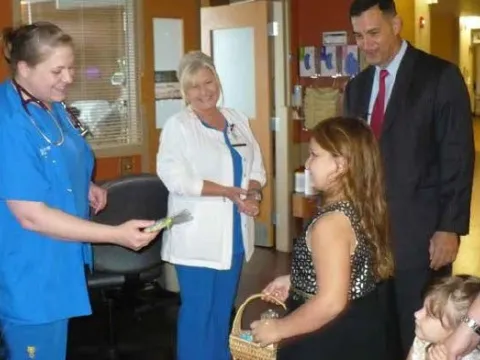- AdventHealth Foundation Central Florida
Choose the health content that’s right for you, and get it delivered right in your inbox.

You probably knew that your pancreas plays an important role in type 1 diabetes, but did you know that it is not just the beta-cells (the cells that produce insulin) that are affected? Recent studies have shown that the whole organ is involved in type 1 diabetes and other forms of diabetes, not just the insulin-producing cells. Our team at The AdventHelath Translational Research Institute Pancreas Biology Laboratory, led by Dr. Anna Casu and Dr. Richard Pratley, aims to study how the different types of pancreatic cells interact with the beta-cells. The interaction of these cells could explain why some people develop type 1 diabetes earlier than others and why some seem relatively protected from the disease. With this information, we hope to discover new innovative ways to diagnose, treat and even prevent T1D.
The studies are done on human organs obtained from organ donors. These organs are not suitable for transplantation but are useful for research that can’t be performed on living patients. These experiments are made possible by the selfless generosity of the organ donor and their families, as well as by the dedication of Carley Glass, Ph.D., who is a key liaison with OurLegacy, the local federally designated organ procurement organization. Dr. Glass knows just how vital her research is for so many people, including herself. She has been living with T1D for 35 years.
“Knowing what people with type 1 diabetes deal with every day keeps me going and motivated to work long hours when a donor organ becomes available.” Dr. Glass remains positive and hopeful what she’s doing today will have a significant impact in the future, “This research extends the use of the precious gifts by the donors and their families for everybody’s benefit. We owe this to them. We work hard to make it possible for these gifts to help many people with diabetes through improving the understanding of mechanisms that cause it.”
At TRI, Dr. Glass, along with other research scientists, look at the structure of the pancreas with Magnetic Resonance Imaging (MRI). They can also inspect small pieces under the microscope to study the whole organ function or the function of each pancreatic cell type. The samples obtained are also archived and can be used by scientists in the future.
“This research is important because the findings are not limited to diabetes,” said Dr. Richard Pratley, Head of the Diabetes Research Program. “The same methods can be applied to studying other pancreatic diseases, including pancreatitis and pancreatic cancer.”





